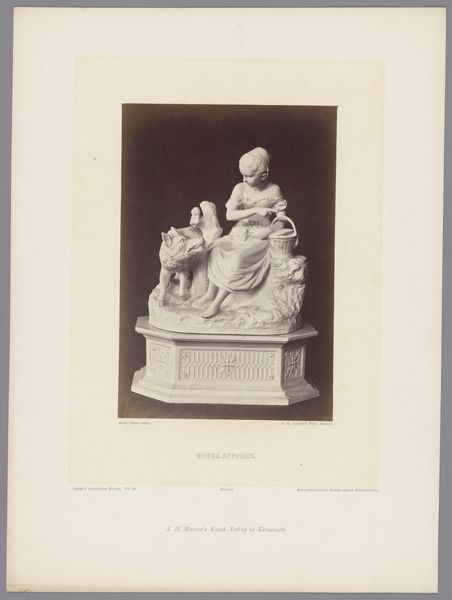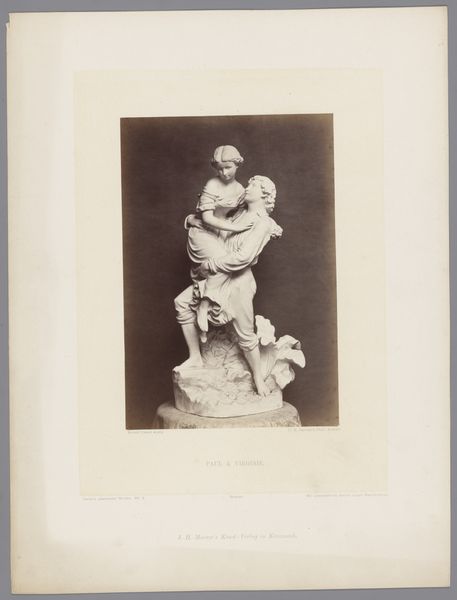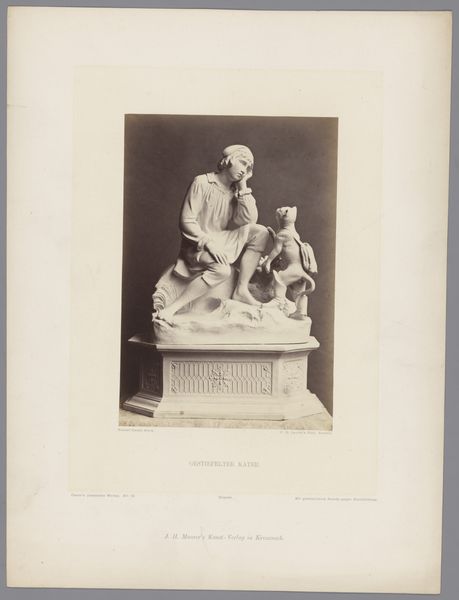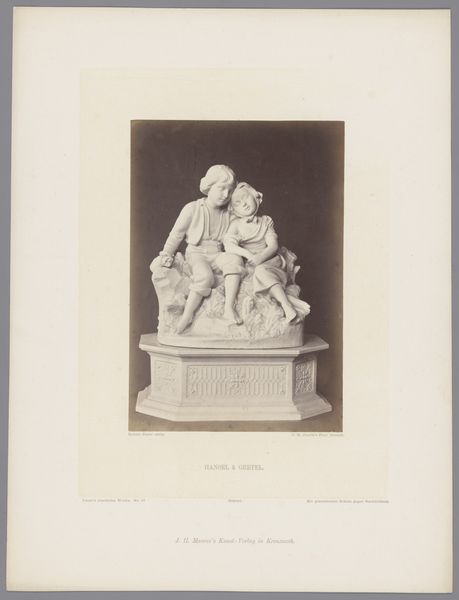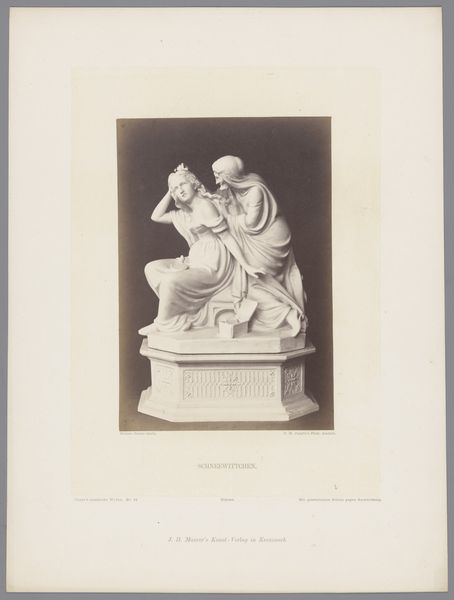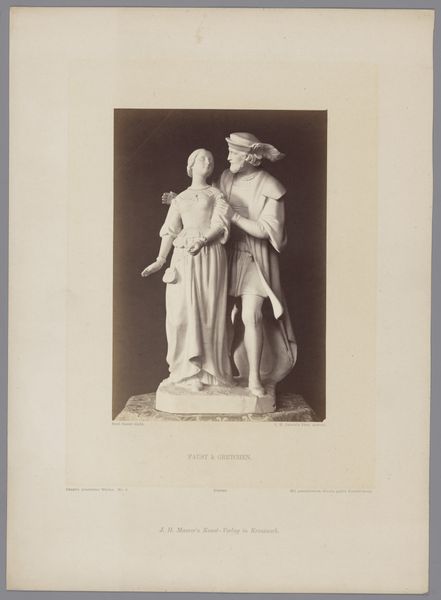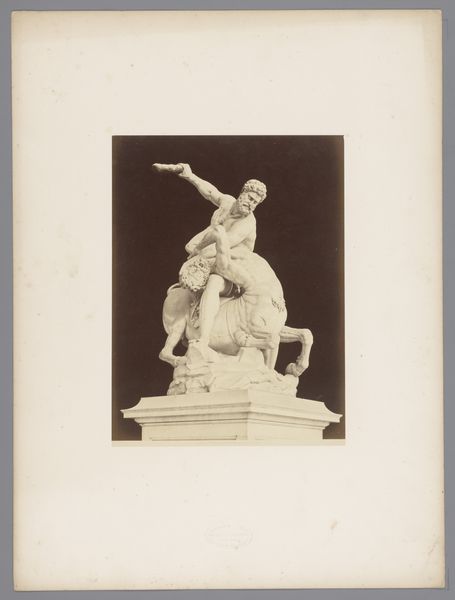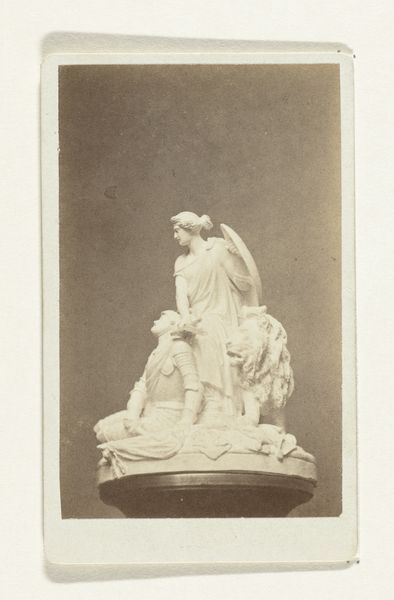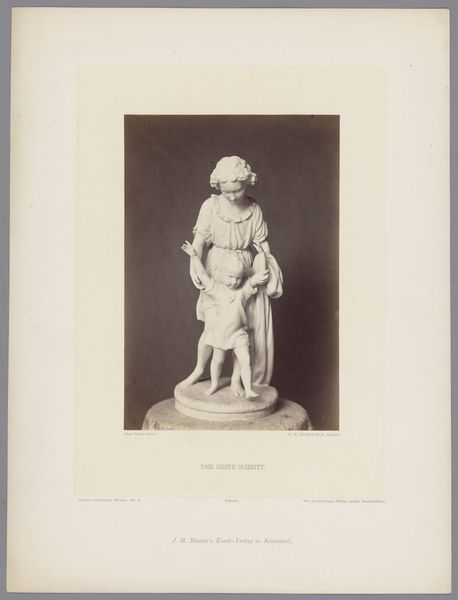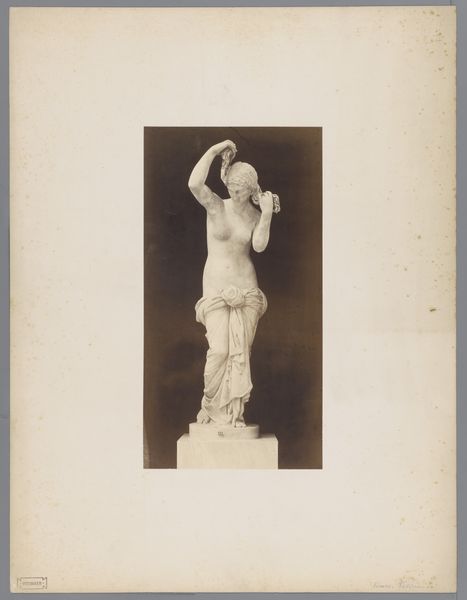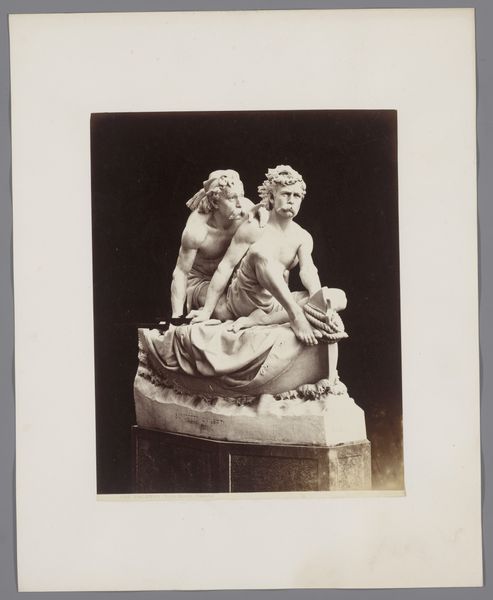
Dimensions: height 347 mm, width 261 mm
Copyright: Rijks Museum: Open Domain
Curator: This is a photograph of the sculpture "De Ganzenhoester door Robert Cauer," taken sometime between 1850 and 1900. The work comes to us through a gelatin silver print. Editor: My first impression is the serene, almost melancholic mood. The light is gentle, focusing attention on the smooth textures and classical composition of the figure. It is so…orderly. Curator: Right, order. The artist, Cauer, positions this figuration firmly within the period's romanticism, although we also see clear neoclassical influences here too. Editor: Neoclassical? Given the sentimentality and relative informality of the composition, is this an attempt at democratizing neoclassicism itself through more widely-accepted romantic conventions? The choice of material likely played a role. What can you tell us about the materials used in the actual sculpture? Curator: While the photo is obviously a gelatin-silver print, we are not sure of the exact materials of the original sculpture by Robert Cauer. It is clear though that there is an element of the handmade at play, reflecting not only Cauer's individual artistic choices but also, perhaps, the broader social trends and industrial landscape of the 19th century and it’s evolving relationship to class and labor. Editor: Absolutely. Considering the semiotic dimension, the woman with geese may evoke images of classical nymphs or pastoral figures. There is also a strange vulnerability, perhaps from the intimate scale—an approach, wouldn't you agree, to making mythic figures relatable? Curator: Myth is constructed! The way Cauer rendered this subject could reflect specific social attitudes toward women, domesticity, and even industrial labor during the time. And while we focus on the artistic value and interpretations of this work, the mode of image production should not be overlooked. Photography offered a relatively democratic way of consuming artworks that were otherwise only available to elite society. Editor: Fascinating. This blend of accessibility and classicism presents us with a lens not only to the artwork itself but to the wider society. It's a very strange contrast. Curator: And perhaps the consumption habits and cultural accessibility of these kinds of art-objects further reinforces class boundaries more than diminishing them. A copy remains just that. Editor: Indeed. It gives a whole new appreciation for understanding form and context simultaneously. Curator: An exercise of continuous re-evaluation.
Comments
No comments
Be the first to comment and join the conversation on the ultimate creative platform.

